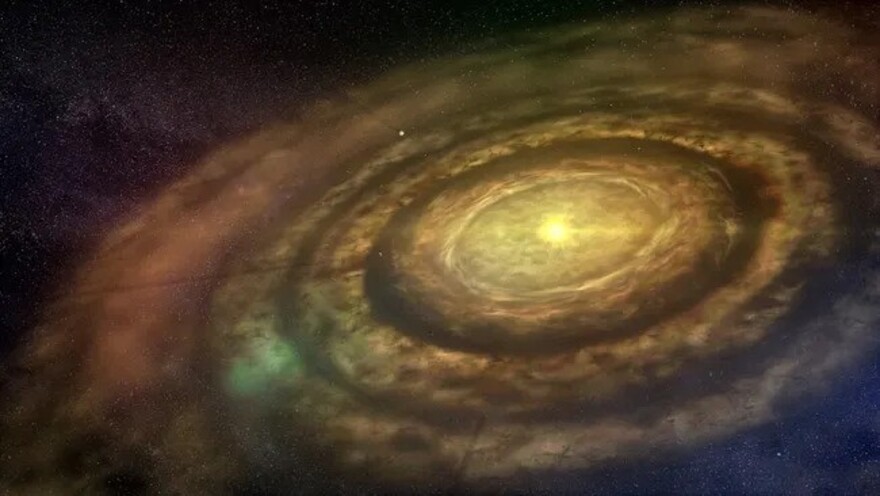Astronomers have managed to look inside the young protoplanetary disks. They turned out to be surprisingly similar in shape to donuts, and new structures were discovered inside them. The analysis shows that the formation of planets in them can be faster than previously thought.

Gas-dust “donuts” near the Solar System
Clouds of dust and gas near our Solar System give astronomers a rare chance to look into the early stages of planet formation. In these clouds, which range in age from 200,000 to 500,000 years and are located within 700 light-years from Earth, dusty, gas-rich disks have been observed around the central star — the birthplace of new celestial bodies. Photographs of these objects taken by the Atacama Large Millimeter/submillimeter Array (ALMA) were presented on Monday (January 8) at the American Astronomical Society conference in New Orleans.
Images shedding light on protoplanetary disks in several well-known molecular clouds, including Ophiuchus, Chamaeleon I, and Cor Australis. “The disks appear donut-shaped, with a large central cavity,” said Cheng-Han Hsieh of Yale University in Connecticut. At a press briefing on Monday, he presented the first results of ongoing research.
Numerous rings and spiral structures have been found in other disks. This probably tells us that the formation of giant planets begins at a very early stage after the formation of a protostar. The new images add more evidence that refutes the current opinion that it takes at least two million years for gas and dust clouds to create worlds like our Solar System.
Planet formation in gas-dust disks
An updated idea of how quickly planets can form appeared in August 2022, when astronomers found the youngest exoplanet ever discovered — a gassy world 395 light-years from Earth, which is only 1.5 million years old.
However, exactly when the process begins inside protoplanetary disks is one of the main questions of planet formation. Recently discovered rings and gaps in protoplanetary formations may provide important clues, but they are very difficult to find.
In addition to the donut-shaped disks, new ALMA observations show that protoplanetary formations can also be filled with gas and dust, which raises interesting questions about which planetary systems these two populations evolve into.
Future studies of early protoplanetary disks may help to understand which of the two types of disks our Solar System evolved from.
According to www.space.com
Follow us on Twitter to get the most interesting space news in time
https://twitter.com/ust_magazine


